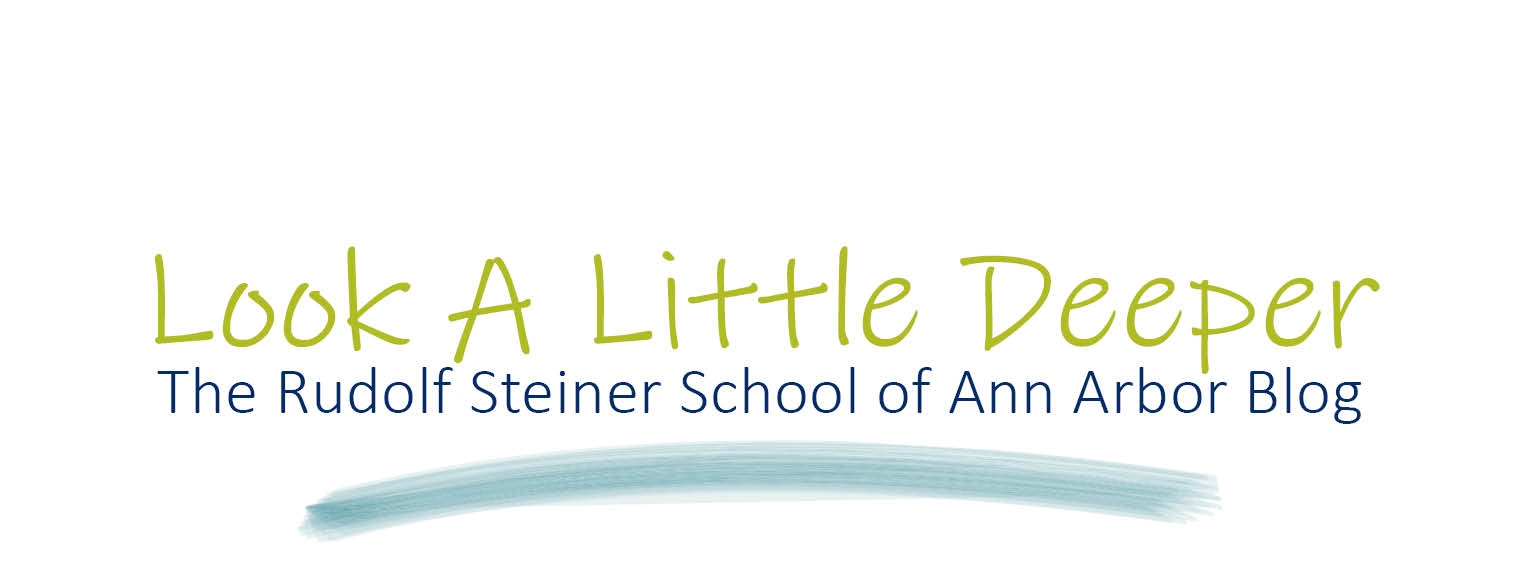

Selecting a High School
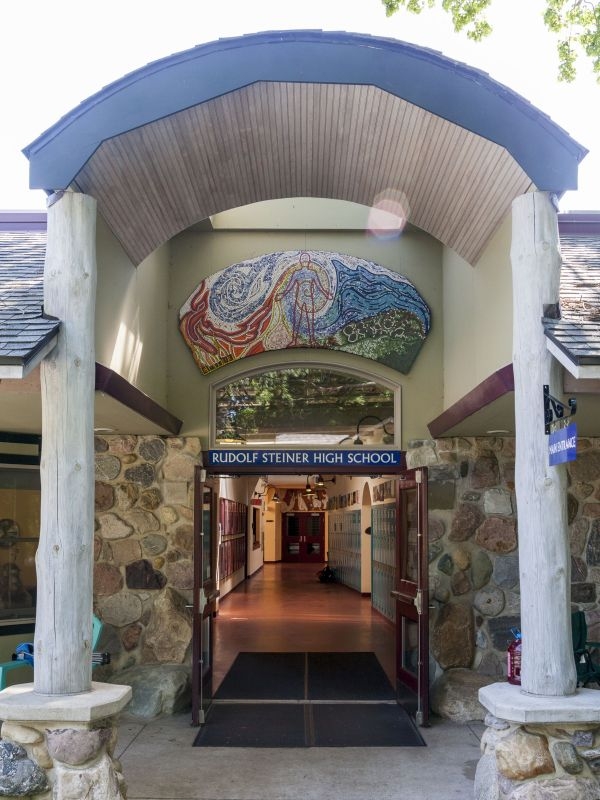
Selecting a High School
Advice from Veteran Waldorf Educators
Choosing the right high school can feel like one of the most significant decisions a family will make in their child’s educational journey.
To bring clarity to this decision, we turned to two of our most experienced educators at the Rudolf Steiner School of Ann Arbor: Margot Amrine, a longtime Waldorf teacher with over four decades of experience, and Dr. Siân Owen-Cruise, our former School Administrator, who has guided countless families through the high school selection process.
Today’s parents listen to and respect their children’s perspectives more than ever before- a positive shift in family dynamics. But as Margot reminds us, that doesn’t mean parents should surrender their leadership on big decisions.
“In our family we said that Waldorf Education for 9th and 10th grade was essential. At 11th grade, a different kind of maturity sets in; if our children had made compelling reasons to leave then, we would have considered. We never had these discussions!”
Dr. Owen-Cruise expands on this, acknowledging that social pressures play an outside role in an 8th Grader's thinking:
“It's natural for teenagers to focus on their peers and social dynamics when thinking about high school. As parents, we listen, we understand, and we take their feelings seriously- but ultimately, we need to lead this decision with wisdom and foresight.”
Dr. Owen-Cruise often frames the conversation with the rising student in the following way:
“Your parents will choose where you receive your high school education, with your input. YOU will choose where you go to college, with our parental input.”
Many families who have walked this path find that their children- whether they started in Waldorf Education or joined from another school-ultimately express gratitude that their parents guided this decision with their long-term development in mind.
Here are some other helpful tips and information when thinking about our own High School:
Waldorf Graduates Pursue Meaningful Careers
“Will My Child Succeed After Waldorf High School? The Research Says Yes” - Blog Article
Parents often ask: Does a Waldorf education prepare students for college, careers, and beyond? The answer is a resounding yes. Studies show that Waldorf graduates not only attend college at high rates but also excel in fields like science, medicine, law, and technology. Employers and universities consistently praise their ability to think critically, communicate effectively, and adapt to a changing world. Want to know why? This article dives into the research and real-world successes of our alumni.
The Joy of a Phone-Free School: How Our Students Thrive Without Screens
"The Joy of a Phone-Free School: How Our Students Thrive Without Screens" - Blog Article
In an age where screens dominate every aspect of life, imagine a school where students engage in real conversations, dive into hands-on projects, and focus fully in class—without the pull of notifications. Our phone-free policy isn’t just a rule; it’s a game-changer. See how it shapes our students’ social and academic lives!
The Joy of a Phone-Free School: How Our Students Thrive Without Screens
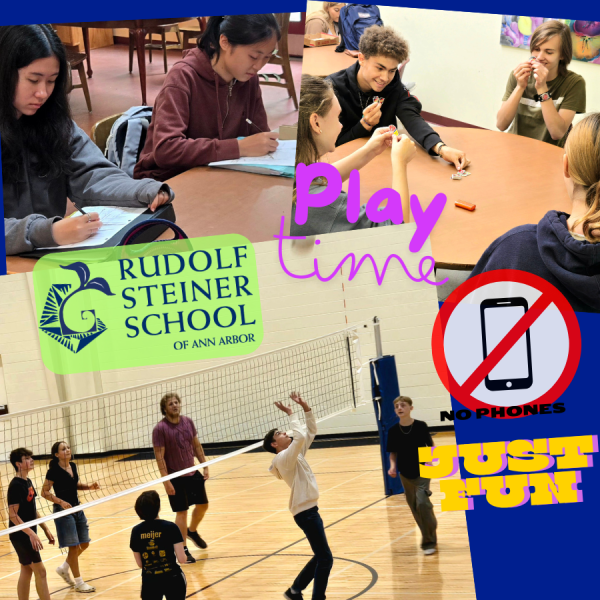
The Joy of a Phone-Free School: How Our Students Thrive Without Screens
Imagine a typical school day where students, between classes and during breaks, are glued to their smartphones—scrolling through social media, playing games, or texting. Conversations are sparse, eye contact is minimal, and the vibrant energy of youthful interaction seems subdued. Now, contrast this with a school environment where smartphones are set aside: students engage in lively face-to-face discussions, participate in spontaneous games, and immerse themselves fully in classroom activities without the constant pull of notifications. This is the reality we’ve cultivated at Rudolf Steiner School of Ann Arbor, embracing a phone-free policy that fosters genuine connections and holistic development.
The Deeper Engagement of Phone-Free Education
At our school, we’ve observed that removing smartphones from the school day does more than just eliminate distractions—it rekindles a deeper, more meaningful engagement among students. Freed from screens, students rediscover the joy of direct communication, collaborative problem-solving, and hands-on learning. This environment aligns seamlessly with the principles of Waldorf education, emphasizing experiential learning and nurturing the whole child.
We Are Phone-Free, Not Tech-Free
While our school maintains a phone-free environment during school hours, we are not devoid of technology. In fact, our curriculum incorporates technology in age-appropriate ways to ensure students are prepared for the digital world:
• Middle School: Students are introduced to computers and the internet in an intentional way that supports learning. Additionally, our middle school robotics club fosters interest in technology and engineering through hands-on projects. https://www.steinerschool.org/programs/extracurricular-activities.cfm
• High School: Our state-of-the-art computer lab facilitates courses in coding, digital literacy, and other computer science subjects. We also have an active high school robotics club where students collaborate on competitive projects that develop real-world problem-solving skills. https://www.steinerschool.org/about-us/waldorf-education.cfm
Many of our graduates go on to thrive in technology fields, excelling in computer science, engineering, and data analysis. Research shows that Waldorf graduates develop strong interdisciplinary thinking skills that prepare them for success in fields that require both creativity and technical expertise.
Leading the Way in Ann Arbor
Our commitment to a phone-free school day positions us as pioneers in the Ann Arbor educational community. While some other local schools have implemented partial restrictions, our comprehensive approach ensures that students remain unplugged throughout the day—including breaks and transitions between classes.
Several Ann Arbor schools are recognizing the value of limiting phone use:
• Forsythe Middle School and Tappan Middle School both require students to keep phones in lockers during school hours. https://forsythe.a2schools.org/our-school/cell-phone-policy, https://tappan.a2schools.org/our-school/cell-phone-policy
• Huron High School has introduced classroom phone storage policies in its Mathematics and English departments to help students stay focused. https://thehuronemery.com/9731/news/cell-phone-use-teacher-led-procedures-to-enrich-student-experience/
The Transformative Power of Disconnecting
The shift to a phone-free environment has yielded profound benefits:
• Enhanced Academic Focus: Without the allure of smartphones, students engage more deeply in lessons, leading to improved comprehension and retention.
• Strengthened Social Bonds: Face-to-face interactions during breaks and collaborative projects foster authentic relationships and empathy among students.
• Improved Mental Well-being: Reducing screen time has been linked to decreased anxiety and stress, allowing students to be more present and mindful.
Embracing a Connected Future Without Phones
As more schools recognize the value of limiting smartphone use, it’s evident that this movement is not about restricting technology but about reclaiming the essence of human connection and focused learning. By leading the way in this initiative, Rudolf Steiner School of Ann Arbor not only adheres to the foundational principles of Waldorf education but also prepares students for careers in STEM, the arts, and beyond.
We invite families seeking a nurturing, distraction-free educational environment to join us in this journey, where students can truly engage with the world around them and develop into well-rounded individuals.
Explore the experiences of other schools with phone-free policies:
• “New data reveals shocking trend since school mobile phone ban”
- “The big smartphone school experiment”
https://www.thetimes.co.uk/article/inside-schools-ban-smartphones-6knb8qtfc
- “Cell phones hinder classroom learning. Texas should tell school districts to lock them up”
- "Waldorf Schools are Media Literacy Role Models"
https://www.steinerschool.org/about-us/waldorf-schools-are-media-literacy-role-models/
The Value of an Unhurried Childhood
A recent New York Times article highlighted the importance of giving children an unhurried childhood, without an overpacked schedule of extracurricular activities and excessive homework. The pressure on Gen Z to excel at a young age has led to decreased mental health and increasing struggles at school. Waldorf Education takes a balanced approach, with plenty of time for children to play and explore, while also providing a joyful and well-rounded education that instills essential life skills, sparks a lifelong love of learning, and prepares them for a successful future.
This article was written by Shalini Shankar and originally published on July 9, 2021 in the New York Times
A Packed Schedule Doesn’t Really ‘Enrich’ Your Child
When the extracurricular-industrial complex came to a grinding halt last spring, parents were left scrambling to fill vast hours of unscheduled time. Some activities moved to remote instruction but most were canceled, and keeping children engaged became the bane of parents’ existence. Understandably, screens became default child care for younger kids and social lifelines for older ones.
As American society reopens, going back to our children’s prepandemic activities looks like an enticing way to reintroduce upper-elementary through high-school-age kids to the outside world. For parents with economic means, it’s tempting to return to a full slate of language classes, sports, music lessons and other extracurriculars — a guilt-free plan to keep kids busy with “enriching” activities while we get our jobs done.
But I suggest pausing before filling up their calendars again. We should not simply return children to their hectic prepandemic schedules.
Certainly, some amount of extracurricular activity can offer a welcome break from screens and help children nurture interests. But for Generation Z, the over-scheduling of extracurricular activities has been bad for stress and mental health and even worse for widening racial gaps. Moreover, as I learned when I conducted anthropological research for my book “Beeline: What Spelling Bees Reveal About Generation Z’s New Path to Success,” it no longer consistently improves the prospects of the white middle-class kids for whom it was designed.
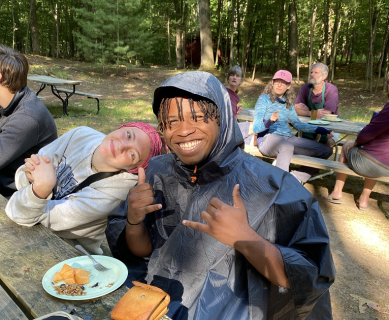 But what can parents do with our kids instead? The answer is simple, though not easy to carry out: We can teach them (and perhaps relearn ourselves) the value of unstructured time and greater civic participation.
But what can parents do with our kids instead? The answer is simple, though not easy to carry out: We can teach them (and perhaps relearn ourselves) the value of unstructured time and greater civic participation.
This does not mean we should quit our day jobs and devote ourselves instead to endless hours of building forts and playing games. Exposing children to sports, music, art, programming or dance certainly has benefits — including physical exercise, intellectual stimulation and fun — but there are also good reasons to give children time to be bored. Not least of these is it forces them to figure out a way to entertain themselves.
For many kids today, scheduled time and down time on their screens are the only states of being. Paradoxically, scheduled unstructured time could address this. Cooking, reading a book, art projects and neighborhood walks are unlikely to completely replace screens, but routinizing blocks of time for these self-sustaining activities each day or several times a week could introduce children and teenagers to new pleasures, and at the very least invite calmness.
Gen Z acutely feels the pressure to be accomplished at a younger age. As kids take on a wider range of challenging activities younger, a trend that began with millennials but has grown to steroidal levels, the criteria for standing out in the college admissions process have shot up accordingly. It’s no wonder kids are stressed out.
The Slacker Generation, an initially disparaging label that Gen Xers have reclaimed, did not have to build a childhood résumé brimming with skills, expertise and accolades to get into college. Now many of these former slackers are parents worried about whether their kids are doing enough to stay competitive in college admissions and the job market. Those who can afford it feel pressure to pad their kids’ résumés as much as they can. A 2019 survey found that more than a quarter of “sports parents” spent upward of $500 per month, with some spending over $1,000 and jeopardizing their retirement savings.
But it’s clear by now that all this expensive enrichment won’t ensure kids’ success. Despite middle- and upper-class millennials mortgaging their childhood to get into college and then toiling through early adulthood in unpaid internships, they are unable to acquire the levels of economic and social security still held by their baby boomer parents.
Perhaps that’s why Gen Z has shown astute awareness of the dangers of overwork, with some high-profile Zoomers demonstrating acts of radical self-preservation. The Gen Z tennis star Naomi Osaka, for example, recently chose to prioritize her well-being over her career’s demands when she dropped out of the French Open after officials fined her for declining to participate in its post-match news conferences. Gen Z seems to have accepted that no matter how much you love your job, your job won’t love you back. Their parents — Gen Xers and even older millennials — were late to this lesson, and if they learned it at all, it was often only when they hit a wall with burnout.
 Of course, preparing children for college and the job market is not the only goal of parents shelling out for guitar lessons or robot-making labs. Parents are also eager to expose their children to different ways of using their minds and bodies in the hope that they’ll discover passions that could become vocations, or simply lifelong joys. One passion that’s worth trying to instill is civic participation.
Of course, preparing children for college and the job market is not the only goal of parents shelling out for guitar lessons or robot-making labs. Parents are also eager to expose their children to different ways of using their minds and bodies in the hope that they’ll discover passions that could become vocations, or simply lifelong joys. One passion that’s worth trying to instill is civic participation.
As parents, we can reinforce the importance of caring beyond one’s own success. Taking your kids to volunteer or to protest injustices they see in the world are good ways to show them what it looks like to give back and replenish. The human and nonhuman connections they will make at food pantries and animal shelters can help kids cultivate empathy — itself a valuable skill for navigating life — while offsetting the anxiety footprint caused by today’s inflated standards for success.
It might feel counterintuitive to deny your children the leg up in life that many extracurriculars promise, but it’s worth examining that impulse too. The pandemic has exacerbated existing socioeconomic disparities, especially along racial lines. With widening wealth gaps, there will be even fewer opportunities to prioritize extracurricular activities for low-income kids. Rethinking the value of a packed calendar offers a concrete opportunity to narrow the racial and economic gaps between privileged and underprivileged kids.
Replacing video games with nature walks might not make you the most popular parent. Your kids may complain a little (or a lot) about losing some of their organized fun, since boredom is a feeling they’ve rarely experienced. But they’ll figure it out.
Harvard Supports: Education Should Be Joyful
Research from Harvard Graduate School of Education emphasizes the importance of making education joyful. Compared with high-pressure, high-stakes, testing-driven environments, students retain more and process better in happy, lower-stress environments. In Waldorf Education, our intentional approach prioritizes engaged, enthusiastic learning and our teachers bring joy to every lesson, instilling a deep understanding of each subject and a lifelong love of learning.
This is an excerpt. The full article was originally published by Lory Hough in the Harvard Ed. Magazine https://www.gse.harvard.edu/ideas/ed-magazine/22/05/space-joy
Is learning even meant to be joyful?
Anyone who has picked up an instrument or tried to learn a new language knows that learning can be hard and frustrating. As Irby pointed out, “Learning is not always a joyous undertaking. Pushing through a difficult subject, topic, or painstaking assignment can be tough.”
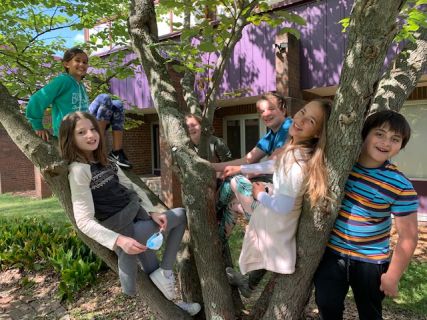 But, he adds, “joy at school and in learning is a foundation from which students gain the confidence that academic struggle is temporary and worthwhile.” There’s also a very real connection to the brain. “The brain does not exist by itself,” writes Professor Jack Shonkoff, director of the Center on the Developing Child. “Connecting the brain to the rest of the body is critically important. When we’re stressed, every cell in the body is working overtime.”
But, he adds, “joy at school and in learning is a foundation from which students gain the confidence that academic struggle is temporary and worthwhile.” There’s also a very real connection to the brain. “The brain does not exist by itself,” writes Professor Jack Shonkoff, director of the Center on the Developing Child. “Connecting the brain to the rest of the body is critically important. When we’re stressed, every cell in the body is working overtime.”
Students who appear joyless or unmotivated may not be making voluntary choices, says Judy Willis, a neurologist who went on to teach middle school for 10 years. Their brains, as Shonkoff points out, may just be responding to what’s going on around them, like the ups and downs of the pandemic and our push to “catch up” academically in schools.
“The truth is that when we scrub joy and comfort from the classroom, we distance our students from effective information processing and long-term memory storage,” Willis recently wrote in the Neuroscience of Joyful Education. “Instead of taking pleasure from learning, students become bored, anxious, and anything but engaged. They ultimately learn to feel bad about school and lose the joy they once felt.” Neuroimaging studies and measurement of brain chemical transmitters reveal that “when students are engaged and motivated and feel minimal stress, information flows freely through the affective filter in the amygdala and they achieve higher levels of cognition, make connections, and experience ‘aha’ moments. Such learning comes not from quiet classrooms and directed lectures, but from classrooms with an atmosphere of exuberant discovery.”
Irby saw this with his own children. When school went remote, they were not happy. “On the best days, they were ambivalent. On the bad days, they were miserable,” he says. When they returned to in-person learning this past fall, things mostly got better. His son, a first-grader, didn’t like people being too close and didn’t want to be overly corrected for his efforts, but “they were very happy to return to school. They loved almost everything about returning, from packing their book bags, seeing their friends and socializing, to developing relationships with their teachers.”
Happy is great, but what about the important idea that we need to regain academic ground lost during the pandemic? As Professor Tom Kane and his colleagues at the Center for Education Policy Research at Harvard University (CEPR) reveal in their new Road to COVID Recovery project, using real-time data and working with school districts across the country, learning loss from the pandemic is significant.
“I don’t think there’s a broad appreciation for the magnitude of the declines we’ve seen,” Kane told Ed. — the equivalent of kids missing three or four months of school last year. As he said in a recent The 74 article, “School districts have never had so many students so far behind.” And especially for some students. The Brookings Institute reported in March that test-score gaps between students in low-poverty and high-poverty elementary schools grew by approximately 20% in math and 15% in reading, primarily during the 2020–21 school year.
CEPR has called for tutoring, extra periods of instruction, Saturday academies, and afterschool programs. Schools, they say, should focus for the next couple of years on getting students back to pre-COVID academic levels.
But what does catch up mean for the joy that tired students and teachers also desperately need?
In a Harvard EdCast interview in February (2022), Susan Engel, a senior lecturer at Williams College and author of the new book, The Intellectual Lives of Children, said, “I heard a first-grade teacher say to me, back in August, when she was planning her remote teaching, she said, ‘The parents are so worried that their children aren’t going to keep up this year.’ And I said, ‘Keep up with what?’ And she looked surprised, and she said, ‘Well, with the standards.’ But I mean, the standards are completely arbitrary. Who made up those standards? Just a lot of people sitting in rooms. I don’t know. And I’m not sure they were good standards in the first place, but it’s silly to let those constrain you too much as a teacher right now.”
Which is why it was interesting, says Wade Whitehead, a fifth-grade teacher in Virginia now in his 28th year of teaching, that in the spring of 2020, when it became clear that we weren’t going back to in-person any time soon, “the first two things we threw out the window were grades and standardized testing.”
Why was that, he wondered? “I think it’s because those two rob students and teachers of joy. I think it was to keep students and teachers happy” as we shifted focus to everyone’s crushing social-emotional (SEL) needs. And there were other changes that at any other time would have seemed radical: Schools shortened the school day and cut back to just a few class blocks a day. “COVID was an opportunity for schools to go deep. People had the freedom to just learn. If you want to be around someone who is happy, be around someone who’s just learning something to learn, especially face-to-face. You’re just happier that way.”
Unfortunately, says Whitehead, a Certificate in School Management and Leadership graduate, a year later, we “picked up those two apples” — grades and standardized tests — “and put them back in the cart. I’m not against grades or tests. I’m for amazing grading systems and amazing assessment and accountability systems.”
Durney agrees that the “normal” way of schooling wasn’t working for everyone and says that we can still rethink schooling.
“We need to use the pandemic as an opportunity to consider how we meet the needs of all our students through engaging tasks,” he says. “Students have access to apps, games, etc., and there are things that can and should be leveraged when designing learning opportunities. It isn’t just academics that students missed over the past two years. They need opportunities to engage in activities that allow them to build and strengthen their SEL skills. Rigor can and should be fun!”
Kane agrees and says that academics and emotional care go hand-in-hand. If students feel more comfortable being back in school, they are going to have an easier time focusing, just as finding success in the classroom can lead to positive effects on mental health.
Irby also says it’s not an either-or as we move forward.
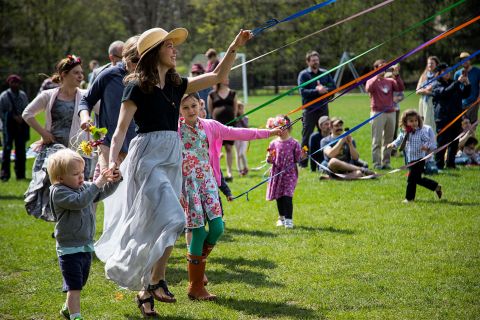 “I would say to educators who want to prioritize getting kids up to speed academically over joy that the two are not mutually exclusive. They should think about them as mutually reinforcing,” he says. “Not only do joy and academic rigor go hand in hand, but tactful educators plan to ensure both happen in tandem.” He noted that Gholdy Muhammad’s framework outlined in her book Cultivating Genius includes five pillars to consider when planning lessons, and joy is one of them. “An example is children’s museums, which offer learning opportunities that center play and fun. Exhibit curators plan with joy and excitement at the center of their learning design, but they don’t forgo academic content. In other words, the same way a teacher can plan to have students learn a disciplinary skill, they can plan for students to experience joy while doing it. One priority doesn’t need to outweigh the other.”
“I would say to educators who want to prioritize getting kids up to speed academically over joy that the two are not mutually exclusive. They should think about them as mutually reinforcing,” he says. “Not only do joy and academic rigor go hand in hand, but tactful educators plan to ensure both happen in tandem.” He noted that Gholdy Muhammad’s framework outlined in her book Cultivating Genius includes five pillars to consider when planning lessons, and joy is one of them. “An example is children’s museums, which offer learning opportunities that center play and fun. Exhibit curators plan with joy and excitement at the center of their learning design, but they don’t forgo academic content. In other words, the same way a teacher can plan to have students learn a disciplinary skill, they can plan for students to experience joy while doing it. One priority doesn’t need to outweigh the other.”
He says this is especially important for students who experience “compounding killjoys” — students who “live with circumstances and experiences that make it very difficult to be joyful. Some big picture joy killers include poverty, racism, social isolation, and concrete realities that stem from racial, social, and economic injustice such as hunger and food insecurity, housing insecurity, exposure to violence, health ailments, and living in a household or community where adults experience chronic stress. The more of these killjoys that students experience, the more concerned educators should be about using learning as a means to cultivate joy.”
For example, he says that if students don’t have access to safe green space, recess should become a priority. If they experience conflict with relationships in their lives, educators can create learning scenarios that are collaborative, “which provide opportunities to find joy in working with people.”
Keeping this in mind, Sandra Nagy, Ed.M.’02, managing director of Future Design School, says any effort to get kids caught up and still feel joy needs to be intentional.
“In order for this important change to take hold in schools, there needs to be a space for joy,” she says. “That means balancing efforts to address learning loss with looking ahead to what we can do next and celebrating the way teachers proved their ability to innovate and adapt in the past two years.”
And Brooks says we can do something else to bring back joy that would once have been considered radical: We can slow down.
“We can engage with students where they are, whatever they’re interested in at the moment, because that’s the ‘stuff’ of the world they’re trying so hard to build normalcy from,” he says. “We can play with them on the field and court and laugh with them throughout the day. There will still be time for all that needs to be learned.”
Is joy still below the surface?
It’s all important — and it’s not all doom and gloom. Even tired educators say that below the frustrations, they see joy again.
“Given the circumstances, I have seen a lot of joy at school,” says Durney. “One of the many benefits of working with elementary-aged children is that they can find joy and humor in just about any activity.” Right before winter break, for example, they held an outdoor schoolwide activity where students were able to share their work and play games created by their peers and with parent involvement. “It felt like pre-pandemic times where we’d gather as a whole school community. The day ended with our principal jumping into the frigid waters at the M Street Beach in South Boston because as a school community we exceeded our fundraising goal. The smiles and laughter throughout the entire day were a great way to end the first stretch of the school year.”
Salch addressed burnout when students — and teachers — stopped using a diagnostic online program by creating a challenge where students would earn a popcorn party if they logged in for 10 of 15 days in December.
“We have a local chocolate factory that sells 10-gallon bags of popcorn for $6. We can feed a whole school for less than $15,” she says. “Students that earned the reward came out to the courtyard to eat a coffee filter full of popcorn and dance to Kidz Bop.”
She celebrates her teachers, too — even in small ways. “I do everything I can to keep my teachers joyful,” she says. “I write handwritten notes to them monthly thanking them or congratulating them on something they accomplished. I give random gifts of pens or stickies to show appreciation. I organize themed meetings that included engaging activities that show each other we are humans before we are our professions.”
Joshua Neufeld, a first-grade teacher at the American International School of Guangzhou in China and a participant in a Project Zero program in 2021, is part of a peer coaching network for international teachers called Positivity Playground. He found that regular staff socializing has helped morale.
“The pandemic has been challenging for everyone, and Positivity Playground reminded me that together, as colleagues, we can generate more positive emotions and manage negative emotions effectively.” With this in mind, Neufeld organized a weekly lunchtime tea party for his colleagues called Positvi-Tea. It’s a time for teachers to hang out and talk, he says, often about things other than school. “This is a time that energizes the participants and challenges them to continue the day with a positive outlook. I leave the meetings feeling recharged, viewing upcoming situations with a sense of realistic optimism.”
Beyond celebrations and gatherings, others say a focus on personalized learning and setting small, actionable steps (not just big lofty goals) can help bring joy back. Brooks says teachers and other educators can also pay more attention to self-care.
“I am striking a better work-life balance, taking time to be with my family and recharge,” he says. “Doing so allows me to be more fully present and increases the likelihood of finding and making joyful moments at work.” The same needs to be done for all educators. “It does not take anything extraordinary to bring joy back to the workplace of teachers. I would argue it comes down to acknowledging the difficulty of the work in these times, commiserating openly and honestly about these challenges, facing them together, and celebrating every small success of the professionals in the building. Impromptu conversations, dropping by to check in, and showing gratitude are a few other easy and regular ways to bring a sense of joy back to the workplace on a daily basis.”
With her ladybug stickers in hand and her joke book open and ready for the next meeting, Julia de la Torre is still tired, but she knows the joy at her school is there.
“Quite frankly, joy is the reason I come to work every day and why I love my job,” she says. “Pop your head into any classroom and you’ll see kids thriving, connecting, and enjoying school. They may have masks on, but you can see joy in their eyes and in their laughter. I’m always trying to remind my teachers that there is joy everywhere in schools, if you stop to look for it. It may be harder to find during these challenging times, but it’s the joy that keeps us coming back for more.”
Adaptability Quotient: Educating for an Uncertain Future
With increasingly rapid changes in the nature of work, employers are interested not just in intelligence and social skills, but in an employee’s adaptability quotient–their ability to adjust to new challenges with flexibility, curiosity, courage, resilience, and problem-solving skills. In Waldorf education, we deepen rigorous academics by integrating art, outdoor education, music, theater, practical work, movement and hands-on learning. The depth and breadth of the Waldorf curriculum challenges students and develops crucial capacities that will help them adapt and thrive throughout their lives.
.jpg/Surpassing_Stem(1)__600x450.jpg)
This article was originally published Seb Murray on BBC.com
As workplaces change, is it enough to be smart? Enter AQ, the capacity to adapt that may well determine your future career success.
Once, if you wanted to assess how well someone might do climbing the career ladder, you might have considered asking them to take an IQ test. For years, it was thought that the intelligence quotient (IQ) test – which measures memory, analytical thinking and mathematical ability – was one of the best ways to predict our future job prospects.
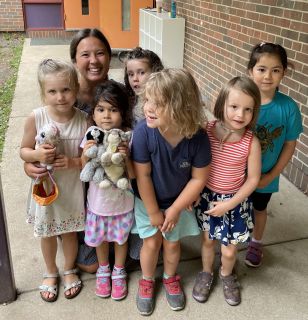 More recently, there has been increased attention on emotional intelligence (EQ), broadly characterized as a set of interpersonal, self-regulation and communication skills. EQ is now widely seen as a tool kit that plays an important role in helping us succeed in multiple aspects of life. Both IQ and EQ are considered important to our career success. But today, as technology redefines how we work, the skills we need to thrive in the job market are evolving too. Enter adaptability quotient, or AQ, a subjective set of qualities loosely defined as the ability to pivot and flourish in an environment of fast and frequent change.
More recently, there has been increased attention on emotional intelligence (EQ), broadly characterized as a set of interpersonal, self-regulation and communication skills. EQ is now widely seen as a tool kit that plays an important role in helping us succeed in multiple aspects of life. Both IQ and EQ are considered important to our career success. But today, as technology redefines how we work, the skills we need to thrive in the job market are evolving too. Enter adaptability quotient, or AQ, a subjective set of qualities loosely defined as the ability to pivot and flourish in an environment of fast and frequent change.
“IQ is the minimum you need to get a job, but AQ is how you will be successful over time,” says Natalie Fratto, a New York-based vice-president at Goldman Sachs who became interested in AQ when she was investing in tech start-ups. She has subsequently presented a popular TED talk on the subject. Fratto says AQ is not just the capacity to absorb new information, but the ability to work out what is relevant, to unlearn obsolete knowledge, overcome challenges, and to make a conscious effort to change. AQ involves flexibility, curiosity, courage, resilience and problem-solving skills too.
Amy Edmondson, a professor of leadership and management at Harvard Business School, says it is the breakneck speed of workplace change that will make AQ more valuable than IQ. Technology has vastly changed how many jobs are done, and the disruption will continue – over the next three years, 120 million people in the world’s 12 largest economies may need to be reskilled because of automation, according to a 2019 IBM study.
Any roles that involve spotting patterns in data – lawyers reviewing legal documents or doctors making a patient diagnosis, for example – are easy to automate, says Dave Coplin, CEO of The Envisioners, a UK-based technology consultancy. This is because an algorithm can do these tasks faster and more accurately than a human, he says. To avoid obsolescence, workers doing these jobs need to develop new skills like creativity to solve new problems, empathy to communicate better and accountability, using human intuition to supplement insight from machines. “If an algo can do 30% of the tasks that I used to do, what can I do with that spare capacity? The winners are those who choose to do things that algos can’t.”
 Edmondson says every profession will require adaptability and flexibility, from banking to the arts. Say you are an accountant. Your IQ gets you through the examinations to become qualified, then your EQ helps you connect with an interviewer, land a job and develop relationships with clients and colleagues. Then, when systems change or aspects of work are automated, you need AQ to accommodate this innovation and adapt to new ways of performing your role.
Edmondson says every profession will require adaptability and flexibility, from banking to the arts. Say you are an accountant. Your IQ gets you through the examinations to become qualified, then your EQ helps you connect with an interviewer, land a job and develop relationships with clients and colleagues. Then, when systems change or aspects of work are automated, you need AQ to accommodate this innovation and adapt to new ways of performing your role.
All three quotients are somewhat complementary, since they all help you to solve problems and therefore adapt, Edmondson says. An ideal candidate possesses all three, but not everyone does. “There are rigid geniuses,” she says. Having IQ, but no AQ would leave you struggling to embrace new ways of working using your existing skills – and low AQ makes it harder to acquire new ones.
AQ is now increasingly being sought at the hiring level. According to the IBM study, 5,670 executives globally rated behavioral skills as most critical for the workforce today, and chief among them was the “willingness to be flexible, agile and adaptable to change”. Will Gosling, Deloitte’s UK human capital consulting leader, says there’s no definitive method of measuring adaptability like an IQ test, but companies have woken up to AQ’s value and are changing their recruitment processes to help identify people who may be high in it.
Deloitte has started using immersive online simulations where job candidates are assessed on how well they adapt to potential workplace challenges; one assessment involves choosing how you would encourage reluctant colleagues to join a company triathlon team. Deloitte also looks to hire people who have shown they can perform in different functions, industries or geographies. “This proves they are agile and a fast learner,” Gosling says.
Fratto of Goldman Sachs, meanwhile, suggests three ways AQ might manifest in potential candidates: if they can picture possible versions of the future by asking “what if” questions, if they can unlearn information to challenge presumptions and if they enjoy exploration or seeking out new experiences.
She says this is not a definitive recipe for AQ, but recruiters should pose these kinds of questions to tease out evidence of AQ in candidates. In fact, she puts them to founders of start-ups seeking her investment.“Start-ups go through evolutions,” she explains. “It’s not like the founder has a written job description; they need some of a fluctuating list of 30 or 50 skills to be successful.”
One good thing about AQ is that – even if you can’t measure it – experts say you can work to develop it. Penny Locaso, the Australian founder ofBKindred, an education companythat helps people to become more adaptable, says some people have more curious or courageous personalities, which may explain why they are naturally better at adapting than others. “However, if one does not continue to surf the edge of their discomfort, the adaptability you are born with could decrease over time.”
She suggests three ways to boost your adaptability: first, limit distractions and learn to focus so you can determine what adaptations to make. Second, ask uncomfortable questions, like for a pay rise, to develop courage and normalize fear. Third, be curious about things that fascinate you by having more conversations rather than Googling the answer, something “which wires our brains to be lazy” and diminishes our ability to solve difficult challenges.
Otto Scharmer, a senior lecturer at the MIT Sloan School of Management who has written books on learning from the emerging future, suggests other methods. In a TED talk, he recommends remaining open to new possibilities, trying to see a situation through someone else’s eyes and reducing your ego so that you can feel comfortable with the unknown.
One thing we do know is that the workplaces of the future will operate differently. We may not all be comfortable with the pace of change – but we can prepare. As Edmondson says: “Learning to learn is mission critical. The ability to learn, change, grow, experiment will become far more important than subject expertise.”
Theater Develops Creativity, Empathy and Confidence
The performing arts help children develop a range of beneficial life skills, such as quick thinking, problem solving, and building self confidence. Theater strengthens empathy by asking a child to embody what their character is feeling and experiencing, and putting on a play also requires students to work as a team. In Waldorf education, students are involved in class plays and musical performances every year. We see the wide-ranging positive impact on our students and the powerful boost to their self confidence that the performing arts provide.

This article was originally written by Julia Savacool and published by Scolastic.com
It’s no big secret that getting kids involved in the performing arts can have major payoffs in school. After all, research shows that children who sing/dance/act/play their little hearts out are four times more likely to be recognized for academic achievement compared with their non-performing friends — and they tend to have enhanced cognitive, motor, and social development to boot. But the benefits don’t end there. Getting up on stage can enrich your child’s life in all sorts of surprising ways.
Kids Who Perform Are Quick Thinkers
Whether you’re a kid or an adult, the ability to stay calm and carry on is what keeps a small blooper from mushrooming into a major one. “When something goes wrong during a show, kids learn to improvise,” says Brian Olkowski, a 4th- and 5th- grade teacher in San Ramon, CA, and director of the school’s drama club. “One of the best things kids discover is how to think on their feet.” No performance is ever perfect, says Olkowski, so the real skill is learning to minimize errors and get back on track. “When someone flubs a line, the other kids learn how to cover for him,” he says. “I tell them it’s not about never making a mistake; it’s about never letting the audience see your mistake. Those are great skills that transfer to the classroom setting as well, whether it’s giving a presentation in front of peers or being called on to answer questions.”
Still, it helps to prepare your child for the possibility of problems cropping up, says Lisa Lollar, Psy.D., a psychologist in Denver, CO, who works with performing artists. “Talk about what she might do if she drops her music or forgets a line,” says Lollar. “Working through the scenarios in advance and coming up with a solution will help her feel prepared if something surprising happens.” The ability to expect the unexpected — and then roll with it — will give your child confidence any time she tests new waters. Lollar adds: “If you help your child define success as being willing to try something new, the idea of messing up isn’t so scary.”
They Master Their Anxiety
.jpg/2022%20Grade%2010%20Greek%20Play_Moment(3)__329x320.jpg) Let’s face it: Even grown-ups get nervous when we have to speak in front of our colleagues or give a presentation to the boss. Learning from an early age how to cope with performance jitters gives kids a leg up in those big life moments. “The first step for a parent is to normalize a child’s feelings of anxiety,” says Lollar. “Tell them, ‘You know, a lot of kids — and even adults — feel nervous before a performance. It’s completely natural.’” It won’t take away the nerves, but it will let your child know there’s nothing wrong with feeling this way.
Let’s face it: Even grown-ups get nervous when we have to speak in front of our colleagues or give a presentation to the boss. Learning from an early age how to cope with performance jitters gives kids a leg up in those big life moments. “The first step for a parent is to normalize a child’s feelings of anxiety,” says Lollar. “Tell them, ‘You know, a lot of kids — and even adults — feel nervous before a performance. It’s completely natural.’” It won’t take away the nerves, but it will let your child know there’s nothing wrong with feeling this way.
Then before the big show, talk your child through his worries by reminding him of other moments when he’s felt anxious, even when things turned out well. “Remind him of the baseball game when he felt really nervous at the plate, but managed to get a great hit,” suggests Lollar. “Recalling past experiences with positive outcomes gives a child confidence.” Other tricks: Help your child calm his body in the minutes before the performance begins by taking four or five long, deep breaths or counting backward from seven. Both force his mind to focus on something other than his nerves.
Once the show is over, let your child bask in his accomplishment, then casually comment on how well everything went. He will carry this experience with him for the next time, as more evidence that he can successfully perform under pressure.
Performers Express Brand-New Emotions
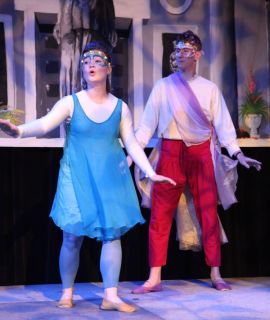 One of the wonderful things about being in a play is that for a short period of time, you get to become someone else. For a child who struggles to talk about her feelings, there is a tremendous relief in disappearing behind a character and using it as an intermediary through which to open up. “It is a very safe way for kids to try out certain feelings — and take ownership of them — while playing the role of someone else,” says Olkowski, who also runs a summer theater program for children. “I’ve worked with shy kids who are able to blossom on stage and express themselves in a way they aren’t comfortable doing around their peers.”
One of the wonderful things about being in a play is that for a short period of time, you get to become someone else. For a child who struggles to talk about her feelings, there is a tremendous relief in disappearing behind a character and using it as an intermediary through which to open up. “It is a very safe way for kids to try out certain feelings — and take ownership of them — while playing the role of someone else,” says Olkowski, who also runs a summer theater program for children. “I’ve worked with shy kids who are able to blossom on stage and express themselves in a way they aren’t comfortable doing around their peers.”
Playing the role of someone else also teaches kids about empathy. “They learn to put themselves in someone else’s shoes,” says Jessica Hoffman Davis, author of Why Our Schools Need the Arts. “In performing the part of someone else, they learn what it’s like to think like that other person.”
Parents can also use a child’s theater performance to open a dialogue about sensitive issues. “Take the experience of a character in the play and tie it to your child’s situation,” says Lollar. “If your child is nervous about her first day of school, it helps to say, ‘Remember when you were in that play, and the character Lucy was scared? How did she handle it? What was she feeling? Did it work out OK for her?’ Drawing parallels to the character’s situation and her own will make your child more comfortable talking about her feelings.”
For kids who aren’t into acting, dance can offer another way to explore their interior world, says Annie Spell, Ph.D., a child psychologist in Lafayette, LA, and co-creator of Leap ’N Learn for the Classroom, a movement program for kids. “Dance teaches kids to think in a totally different way. You take the physiological experience of an emotion and assign it a corresponding movement instead of a word. It can be a powerful tool for kids who have trouble expressing themselves.”
Their Self-Esteem Can Soar
 There’s nothing quite like hearing a crowd of total strangers laugh at your joke or applaud your double pirouette to make you feel like a star. “Hearing the audience clap at the end of the show is an incredible feeling,” says Olkowski. “The kids are like, ‘Hey, this is for me!’ That instant positive feedback is really rewarding.”
There’s nothing quite like hearing a crowd of total strangers laugh at your joke or applaud your double pirouette to make you feel like a star. “Hearing the audience clap at the end of the show is an incredible feeling,” says Olkowski. “The kids are like, ‘Hey, this is for me!’ That instant positive feedback is really rewarding.”
But it’s more than just the ego boost from the fans — any type of performance requires teamwork to succeed. “Kids are introduced to the notion of an ensemble,” says Davis. “It’s not just you up on stage. You are responsible for a larger group that is counting on you to do your part so they can do theirs.” That weight of personal responsibility is rare in a child’s world, and successfully delivering his lines or hitting the right guitar chords means more because of what’s at stake.
“During a performance, kids become part of a larger system, working toward a common goal,” adds Spell. “It is the culmination of weeks of practice, so the performance itself becomes the reward for all that work.” Although a positive performance will give your child a self-esteem injection, it’s important to put the emphasis on effort, rather than results. “Every child will fail at some point,” notes Spell. “But if they judge themselves on putting their best effort forward and not on being perfect, the experience can still feel rewarding.”
Performers See the World in a Whole New Way
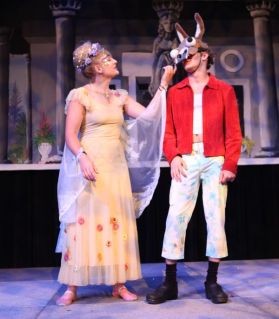 At the end of the day, the transferable skills a child learns from performing may not be nearly as important as the experience of performing itself. “We’re always looking for ways the arts can benefit kids in other areas of life,” says Davis. “It’s as if art for art’s sake isn’t worth our time, when in fact, it gives kids an awareness about themselves and creative skills they’d never learn otherwise.” She may never apply the improvisation skills she learned during the school play to a math equation or turn her teamwork with other dancers into leadership on the school playground. But simply by having been part of the performance process, your child has been exposed to a new way of thinking and doing. And that alone is a success to be proud of.
At the end of the day, the transferable skills a child learns from performing may not be nearly as important as the experience of performing itself. “We’re always looking for ways the arts can benefit kids in other areas of life,” says Davis. “It’s as if art for art’s sake isn’t worth our time, when in fact, it gives kids an awareness about themselves and creative skills they’d never learn otherwise.” She may never apply the improvisation skills she learned during the school play to a math equation or turn her teamwork with other dancers into leadership on the school playground. But simply by having been part of the performance process, your child has been exposed to a new way of thinking and doing. And that alone is a success to be proud of.
School Trips as a Rite of Passage

Our 8th grade class recently returned from its annual class trip, a 10-day wilderness adventure in New England. This 8th grade trip is a rite of passage for students, the culmination of progressively longer and more adventurous excursions undertaken by the class teachers and students over the years.
At Rudolf Steiner School of Ann Arbor, we strongly believe these class trips are a vital part of the student experience. They foster a connection with the outdoors, offer opportunities for teamwork and class camaraderie, give some students an experience they might otherwise never have, and teach responsibility and self-knowledge. They also provide moments of joy, life-long memories, and shared experiences that further cement the bonds among the students.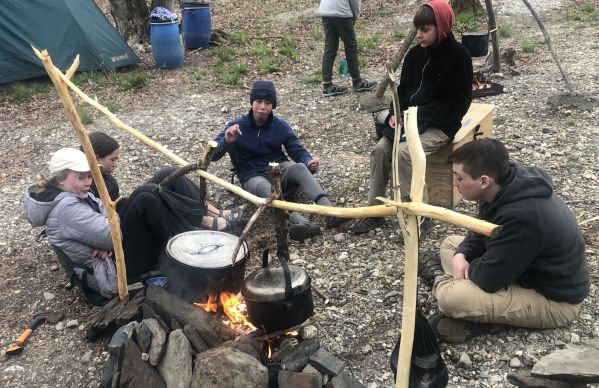
Typically, a class’s first overnight trip takes place in 3rd grade, where the class spends a night at a farm. This supplements the in-class work of 3rd grade, where students learn about farming, shelters, and ways people have lived and survived throughout history. By the time they reach middle school, the students have been on several overnight trips. In the middle grades, they spend a few nights in a dark-sky area as part of their astronomy studies and travel to Hocking Hills, Ohio, to further their lessons in mineralogy and geology.
The 8th grade trip is a wilderness adventure experience. RSSAA has generally used two organizations to help us with this experience: the Northwaters & Langskib camp based out of Temagami, Ontario or Kroka Expeditions, based out of Marlow, N.H. Each offers a program of canoeing and camping that challenges the students physically; requires them to work together to set up camp, cook food, clean dishes, take care of the canoes, etc.; and provides an opportunity for self-reflection, community sharing, and social and emotional growth. These trips are usually undertaken at the start of the school year, or even before the school year officially begins, as they are an excellent way to launch the class into their last year together before high school.
As an 8th grader teacher, I have experienced both the Northwaters and Kroka experiences — both were incredible and so important for my students. Last year, my class went to Kroka and paddled down the Battenkill River from Vermont to New York — the same path taken by this year’s group of 8th graders. My class enjoyed the challenges posed by canoeing along a swift-moving river — we had to navigate rapids, hairpin turns, fallen trees, lots of rocks, and ever-changing water depths. Despite the challenges, there is little to compare to the feeling of navigating your way down an isolated, scenic river, seeing birds and other wildlife on the shores, discovering the best place to pitch a tent, staring a fire and making food for your class, and chatting with friends by the fire as the stars emerge.
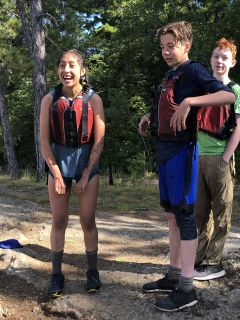 As is the intent of a rite of passage, when a class returns to school following these trips it is evident how much the students have grown, both as individuals who confronted and overcame their own personal challenges on the trip, and as a group who discovered strengths and vulnerabilities in their classmates they never knew before and who return with a shared experience that belongs only to them. Each year there is inevitably a student or two who do not want to take on the expected rigors of the trip, but upon return they are always glad they did and many say they now feel like they could accomplish anything!
As is the intent of a rite of passage, when a class returns to school following these trips it is evident how much the students have grown, both as individuals who confronted and overcame their own personal challenges on the trip, and as a group who discovered strengths and vulnerabilities in their classmates they never knew before and who return with a shared experience that belongs only to them. Each year there is inevitably a student or two who do not want to take on the expected rigors of the trip, but upon return they are always glad they did and many say they now feel like they could accomplish anything!
While the 8th grade trip is in many ways the culmination of these experiences in the grades and middle school, these types of trips continue for students at our high school. Ninth graders end their freshman year with a week at the Community Farm of Ann Arbor, while 10th graders take the knowledge they learned during their sophomore year for a week-long land surveying expedition at Camp Lookout on the northern shores of Lake Michigan. Seniors wrap up their RSSAA journey with two amazing adventures: a Zoology trip to Hermit Island, Maine, where they explore the flora and fauna of the ocean and tidal pools; and an adventure in Venice, Florence, and Rome, where they explore the artists, writers, and thinkers they learned about in the classroom for so many years.
These trips are a cherished and important part of our curriculum. I believe they play a central role in helping our graduates to be well-rounded citizens of the world, with the self-confidence to take off on their own life adventures.
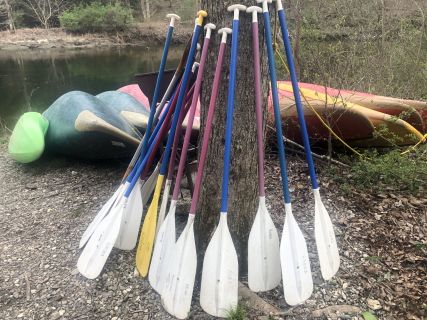
Weleda's Ties to Steiner
A long-time favorite in our school community and sold in our school store, Weleda products are on the cutting edge of regenerative farming and social responsibility, as well as being popular in the celebrity crowd. Here's a little history of the products, the mission of the company and its ties to Rudolf Steiner, founder of Waldorf education.
Originally posted in full by Chantel Tattoli in the New York Times on August 20, 2022
Calendulas look like daisies, smell like marigolds and possess powerful phytochemicals that can mend skin. At a garden in Schwäbisch Gmünd, Germany, Astrid Sprenger’s blond bob and turquoise pendant swung in the sun as she picked the fiery orange flowers by hand.
“It’s one of the only plants you can put on open wounds,” she said.
Dr. Sprenger, 56, who holds a Ph.D. in agricultural science from the University of Hohenheim in Stuttgart, is a head gardener at Weleda, a Swiss company perhaps best known for its ultrarich Skin Food cream. Sold in parrot green tubes, the moisturizer costs $12.49 an ounce.
Though Skin Food has gone by that name only since around 2010, its formula dates to 1926. In addition to extracts of calendula, it also contains concentrated forms of chamomile and wild pansy, as well as sunflower seed and sweet almond oils and beeswax.
The Skin Food line has expanded to include Skin Food Light, a less dense version of the original cream, along with a lotion and body and lip butters. According to Swati Gupta, Weleda’s head of e-commerce in North America, in 2020, the company sold a Skin Food product every five seconds. Weleda is developing new Skin Food cosmetics, including some for the face, with plans to debut them next year.
Farm to Tube
The plants used to make Skin Food and Weleda’s other products are grown worldwide. In Schwäbisch Gmünd, the 50-acre plot that Dr. Sprenger oversees runs wild-ish with some 260 species that include stonecrop and mistletoe. It is one of eight gardens owned by the company, which is based in Arlesheim, Switzerland, and sources from an additional 50 partner growers.
Occupying some 60,000 total acres, the web of gardens, which spans five continents, is roughly 70 times the size of Central Park.
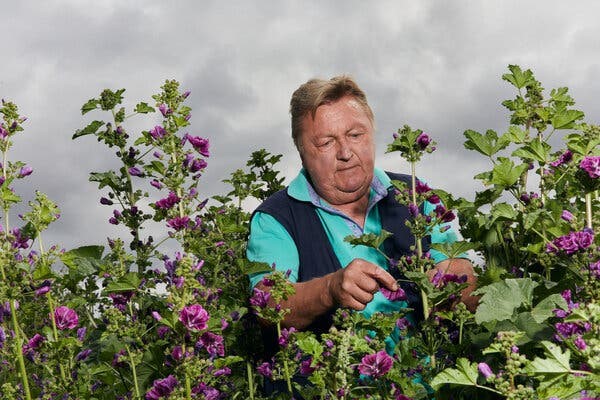
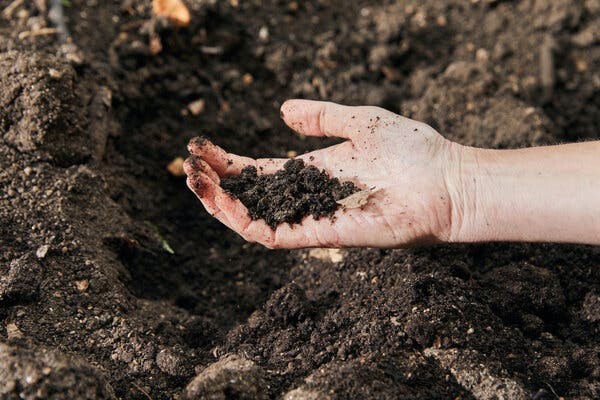
Last year, Weleda achieved B Corp certification, meaning its operations meet certain social and environmental criteria. It is also certified by the Union for Ethical BioTrade, which sets best practices for sourcing ingredients.
The gardens it owns are certified by Demeter, an organization that maintains the standards for the agricultural practice known as biodynamic farming, which Dr. Sprenger compared to regenerative farming — an organic method that focuses on soil health and forgoes elements of industrialized agriculture such as synthetic chemicals — but “on a higher level.”
The practice demands strict standards for biodiversity and soil fertility; at Weleda’s gardens, topsoil is not tilled and crops are both rotated and intercropped, or grown together in the same plot, with three to 10 other species. Another tenet of biodynamic farming is composting. “It’s not like poo,” Dr. Sprenger said as she plunged a trowel into a dark mound that disgorged bugs and a heady herbal odor. “It’s nice!”
The compost she was sifting through contained homeopathic additives, or preparations, made from fermented plants including yarrow and valerian. Preparations are also a requirement of biodynamic farming, and others are sprayed directly onto soil or crops. One, called horn manure, does include excrement. It is made by packing cow dung into cow horns that are buried underground for the winter and dug up in the spring; the dung is then extracted from the horns, swirled into rainwater at body temperature and flicked at the soil with a brush, not unlike how a priest sprinkles holy water.

Some growers see preparations as magic potions of sorts, claiming they sensitize soil to cosmic rhythms. Followers of what’s known as the biodynamic calendar sow, plant and reap crops based on the positions of the sun, moon, planets and stars. (While not necessary for Demeter certification, some of Weleda’s gardens operate this way, but not the one in Schwäbisch Gmünd.)
More demonstrable benefits of the preparations, Dr. Sprenger said, include fungus control, increased microbial diversity, nitrogen stabilization and the ability for soil to sequester larger amounts of carbon.
Calendulas grown in Schwäbisch Gmünd are used to produce Weleda’s Comforting Cream Bath cleanser for babies. “In high season, we encourage our office employees to help with the harvest,” Dr. Sprenger said.
Those used in its Skin Food products are farmed biodynamically near Frankfurt and transported to a lab in Schwäbisch Gmünd, just five minutes by foot from the garden, where they are heated in sunflower-seed oil at around 155 degrees Fahrenheit, cooled and pressed into a concentrate that is then incorporated into various formulas.

Steady Growth
Weleda’s first gardens, in Switzerland and Germany, were in operation at the time it was formed in 1921 by Ita Wegman, a physician, and Rudolf Steiner, a New Age philosopher who two years earlier opened the first Waldorf, or Steiner, school. Then known as Futurum AG, it has since inception produced pharmaceutical as well as cosmetic products (only the cosmetics are sold in the United States).
Both the company and the school were influenced by the spiritual science movement anthroposophy. Also founded by Steiner, its adherents believe that everything in nature is interconnected. Before he died in 1925, Steiner gave a series of lectures on alternative agricultural techniques, which laid the groundwork for what later became known as biodynamic farming, said Peter Staudenmaier, an associate professor of history at Marquette University in Milwaukee.
Steiner and his followers wanted “to heal the earth,” said Dr. Staudenmaier, who specializes in the political history of environmentalism. “Their mission was to regenerate the soils that had been abused and despoiled by industrial processes,” he added.
Steiner’s thinking about agriculture continues to inform that of the company he co-founded, which in 1928 was renamed Weleda in a nod to Veleda, a Germanic priestess and healer who lived during the first century A.D.
“One of the most important things that we as a society can do to combat the effects of climate change is more regenerative agriculture,” Rob Keen, the chief executive of Weleda in North America, said.
“Select Steiner teachings are not reflective of Weleda’s guiding principles upon which we were founded more than 100 years ago and by which we continue to be guided today,” he added.
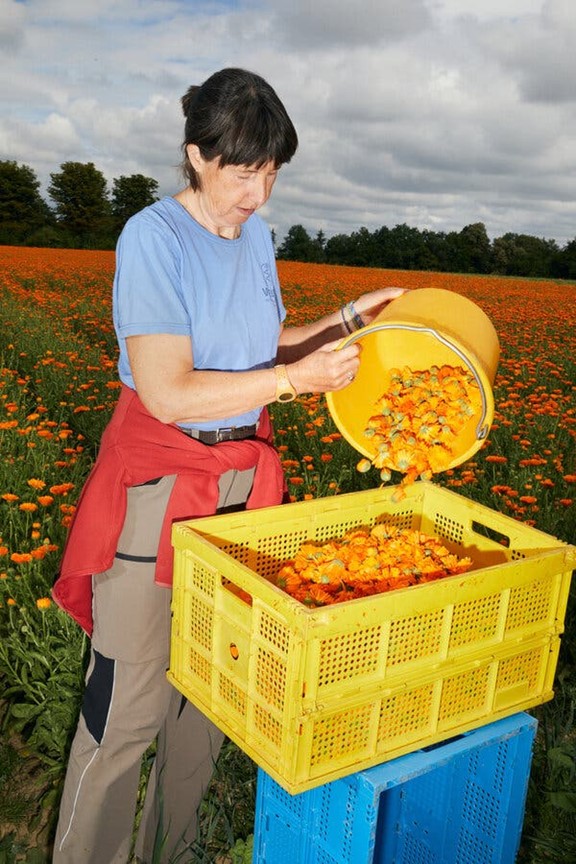
By 1931, five years after it introduced what would one day be called Skin Food, Weleda had opened an arm in the United States. Ahead of and during World War II, the company conducted business with the Nazi Party in Germany. It later made an effort to reconcile with this period in its history by issuing an apology to Holocaust survivors and opening its archives for academic research. Dr. Staudenmaier explored the Nazis’ connections to Weleda and other biodynamic growers in a 2013 research article. “Like any historian, I do wish that a company like Weleda would pay more attention to the complexities in its own history,” he said.
Domestically, its products were mainly sold at independent pharmacies and health food stores until 1984, when the grocer Whole Foods began to stock them.
According to Ameena Meer, who formerly worked as a creative director for Weleda in North America, Skin Food started to become more widely popular in 2017, around the time that consumers began to seek products that promised “dewy, glowy, glassy, glazed” complexions. The next year, Ms. Meer developed a marketing campaign to modernize Weleda in the United States, where she said it had a reputation as being old-fashioned.
Both the campaign and the renewed interest in Skin Food helped to usher in a “cool comeback” for Weleda, said Ms. Meer, 59, who lives in Los Angeles and now works as a wellness consultant and psychic. Major retailers that currently sell its products include Amazon, Target and, as of last year, Walgreens and CVS.
Food for Thought
“It’s thick,” Morgan Jerkins, a writer in New York, said of Skin Food.
“I feel like if I wear Weleda Skin Food, I’m going to be OK if I walk to the subway in February. I feel like it’s going to put up a fight.” Since she started using the product, Ms. Jerkins, 30, added that she has not had a need for foundation.
Skin Food also has fans in celebrities such as Gwyneth Paltrow and Sharon Stone. “I always have it in my set bag,” said Fiona Stiles, a makeup artist in Los Angeles who works with famous clients. “It’s so humectant!”
Ms. Stiles, 51, has carried the cream in her kit for 15 years. She particularly likes to use Skin Food as a topper, applying it with her palms onto the apples of clients’ cheeks for “a very even highlight.”
The product smells citrusy and, vaguely, of vanilla and bell pepper. “I imagine that people who love Campari, Ricola cough drops and the fragrance Bistro Waters, by the perfumer D.S. & Durga, tend to gravitate toward its scent,” said Porochista Khakpour, a writer in Los Angeles. Ms. Khakpour, 44, first discovered Skin Food more than a decade ago, in Berlin. “It’s deservedly iconic,” she added. “If someone is carrying it, I think they’re in the know.”
This year, Weleda promoted the Skin Food product line as part of a campaign to raise awareness of its agricultural practices. Called Save Earth’s Skin, it features the model Arizona Muse, 33, as its face. Ms. Muse, who lives in Ibiza, is also the founder of Dirt, an organization that funds biodynamic farming projects.
As a child, Ms. Muse attended Waldorf schools in Santa Fe, N.M., and Tucson, Ariz. She credits her interest in agriculture to her mother, who introduced her to Steiner’s anthroposophy movement, from which biodynamic farming was born.
“This is such a deeply protective approach,” Ms. Muse said of the method.
In the Save Earth’s Skin campaign, she compares soil to human skin, encouraging a twist on the golden rule: Do unto the planet’s dirt as you would your own epidermis.
Social & Emotional Heath

Social and emotional skills are vital for a child’s future, and in young children those skills are undergoing great expansion. The child lives in the present moment and in a world of wonder which can make social and behavioral obstacles challenging. Wonderful opportunities present themselves during the child’s time in the classroom and at home, and adults can help support learning while meeting the child at the developmental stage that he or she is in. This topic is at the heart of Waldorf education.
Parents often ask us about strategies and helpful approaches to navigating discipline and conflict. One of the most important aspects that we consider is how the child views him or herself and others.
It is easy to categorize things into good and bad, right and wrong; but human interactions and social relationships are much more complex than that.
Every human being has experienced times in which they have been unkind, insensitive or hurtful. It is in remembering these times and seeing the other person as a striving human being, that we can work through conflict and develop empathy for others. The last thing that we want is a child to begin to feel as though they are a bad person and unworthy of our love and care. One of the things we aim to foster is an environment of inclusivity and seeing others as equally important and valuable.
Each child enters a class with his or her own wonderful gifts and challenges and grows tremendously from what each classmate brings to the group. The world of play offers a child a stage to try on many hats which may manifest in various emotions, behaviors and roles. Children will often work out some social questions and conflicts that they are trying to comprehend through their play. Through observing children's play, adults are given a window into things the child is trying to figure out, which are often questions of morality. 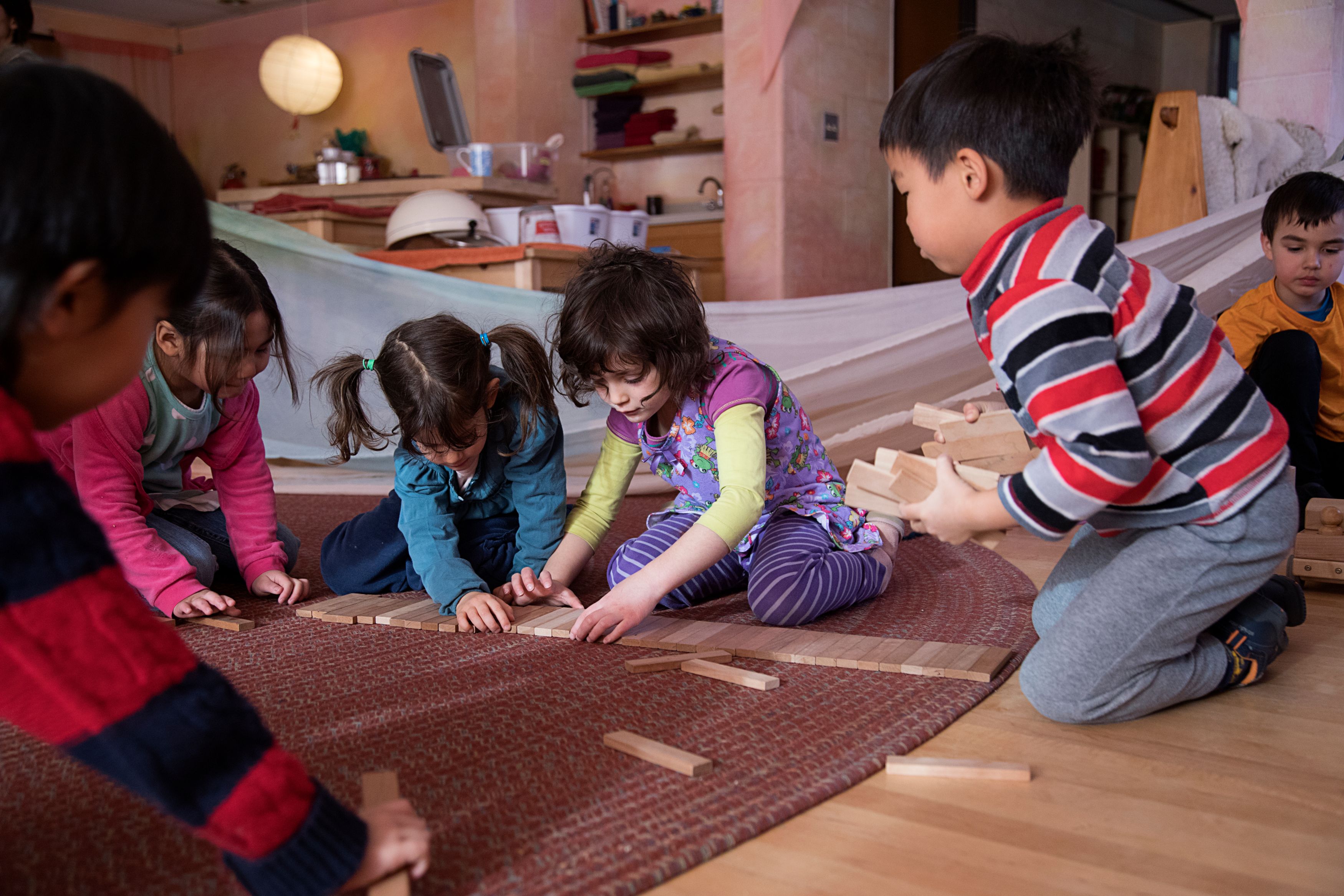
At RSSAA, children are encouraged to work challenges out first on their own to help them develop the foundation of lifelong communication and social skills. This is all done in the safety of a well-prepared and cared for classroom environment. The teacher works hard to maintain this environment while supporting the children in the class and the joys and struggles that they will experience together. At home, it is the same. The environment of family and the values that are set for how to treat one another allow the child a safe place to grow. Sibling interactions can sometimes be extremely difficult, but also tremendously rewarding. The same holds true for the interactions in the classroom.
The adult’s tone is important and should be relaxed and practical, stating observations or asking a needed question.
Approaching conflict without judgement can be one of the most difficult things for adults to do, especially when they clearly see a child do something unkind or hurtful. However, we have found that this is key to creating a space for growth to happen. By observing or sportscasting what you saw, without tones of judgement, a child can feel less defensive and better able to reveal the reasons behind their struggle. This can help take them out of the feelings of fight or flight and into a realm of learning and reflection. By speaking without judgement and describing another’s perspective of what happened, the children start to be able to see another person’s perspective, which in turn develops empathy.
Possible active observer statements:
I saw that Sally had it and Jim grabbed it
I have not heard you ask him for it
I see that Julie has many rocks and Jerry does not have any
Possible prompts:
You may ask him for a turn when he is done
You may talk to her first about that
When we have our coats on, we can go outside to play
When we are sitting and everyone is ready, we will pass the snack
Redirecting and engagement are great tools.
When situations are emotional, sometimes some breathing space and a shift of focus can make a world of difference. Redirecting the focus to a different activity with a child can shift the focus to practical work and engagement. Once the child is ready, the adult can invite other children to join. Often good work can bring two children together with a purposeful task and hard feelings start to dissolve. This could be all that was needed at the time to move past what happened, while other times the child may need this time to come to peace before bringing the conflict up in a way that they can talk about it. As the evening winds down it is easy to recap the day, acknowledging the areas you connected and the struggle that was had.
Acknowledging someone’s feelings can be powerful.
Whether a child is sad, angry or upset, stating that out loud gives the message to the child that you see that something is bothering them and can help them learn about identifying and coping with their emotions. Sometimes it is helpful to recognize the c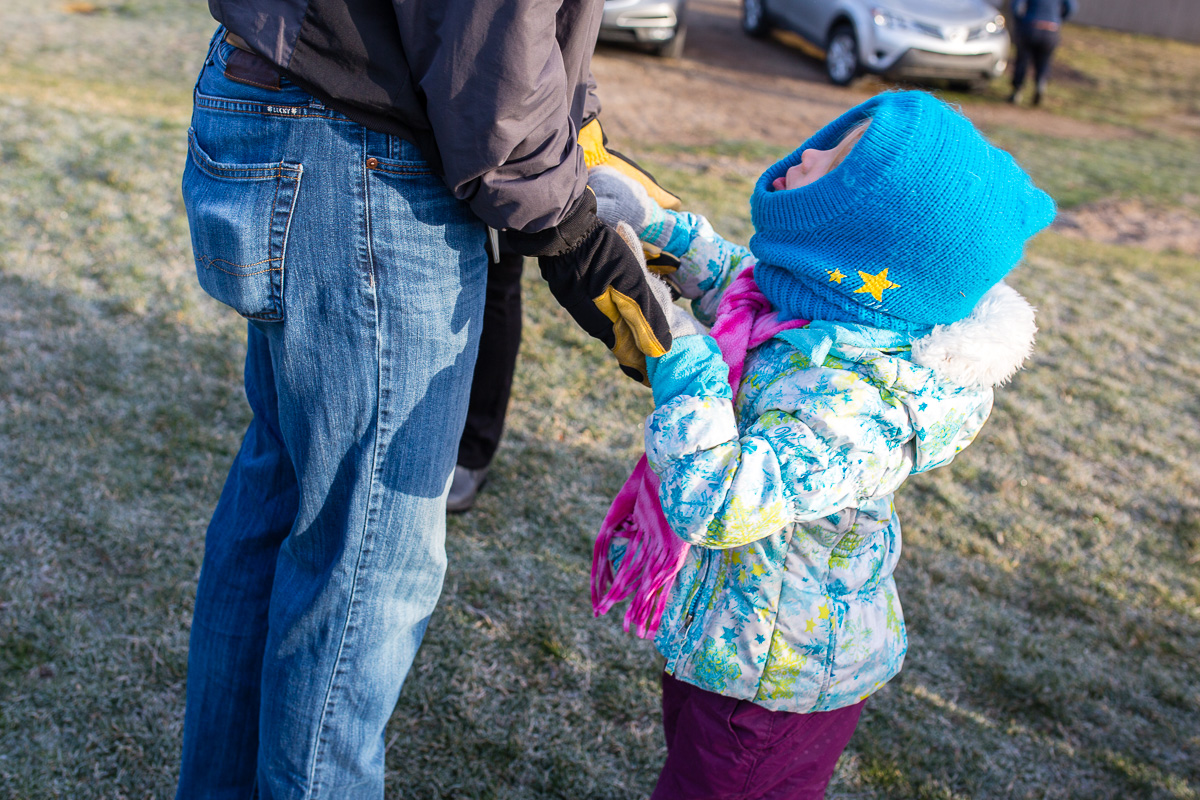 hild’s feelings simply before moving into practical ways to resolve the situation. An adult saying an acknowledging phrase helps the child feel connected to the adult or group. Here are some example phrases:
hild’s feelings simply before moving into practical ways to resolve the situation. An adult saying an acknowledging phrase helps the child feel connected to the adult or group. Here are some example phrases:
It looks like you are upset.
I’m sorry that happened.
That must have felt....
Reconnecting is key.
Showing that you care about a child in the moment of struggle lets them know that you still have a positive view of them and they are valuable. Reconnecting could be as simple as saying: “I know that you are such a kind and loving person. I remember how you found that beautiful rock the other day and brought it home for your brother. It’s okay to get mad, but we need to make sure no one gets hurt.”
Adults make mistakes too: let them see how you handle it!
It is important that the children can see that adults can make mistakes too, and that we are always trying to do our best. We work to be a model worthy of imitation, and that extends to our social interactions with the children and other adults. It is powerful for a child to see an adult make a mistake and then work to fix it, whether it be apologizing or having honest communication with someone.
It is ideal for the child to initiate resolution.
When children have a social conflict, it is ideal for the child to initiate resolution first. Ideally, they will grow the capacities and skills to navigate all the social and emotional struggles that will happen throughout their childhood and adult life. However, sometimes an adult is needed to help facilitate. This is one of the hardest things to get right. Once a teacher starts to see a pattern emerging then he/she moves towards more direct forms of interventions. Otherwise, simple redirection or a listening ear can be just the right tool. Not every moment needs to be talked about with an adult, and sometimes the children can come up with a compromise that is unfair in adult eyes but perfectly fair in theirs. Give them a minute (or a few) to try to figure things out, if it feels safe to do so.
Being accountable is an important thing to learn.
Taking accountability when someone does something wrong can be hard: no one wants to do something mean or wrong to those they love. Accountability without blame can be accomplished if we can help children to feel comfortable in a somewhat uncomfortable situation. Reminding in a firm but loving way that unkind words and actions can and do hurt. This can be truly recognized when the children can be brought together in a safe and productive way through meaningful activities.
Sometimes children need a break from one another in play.
S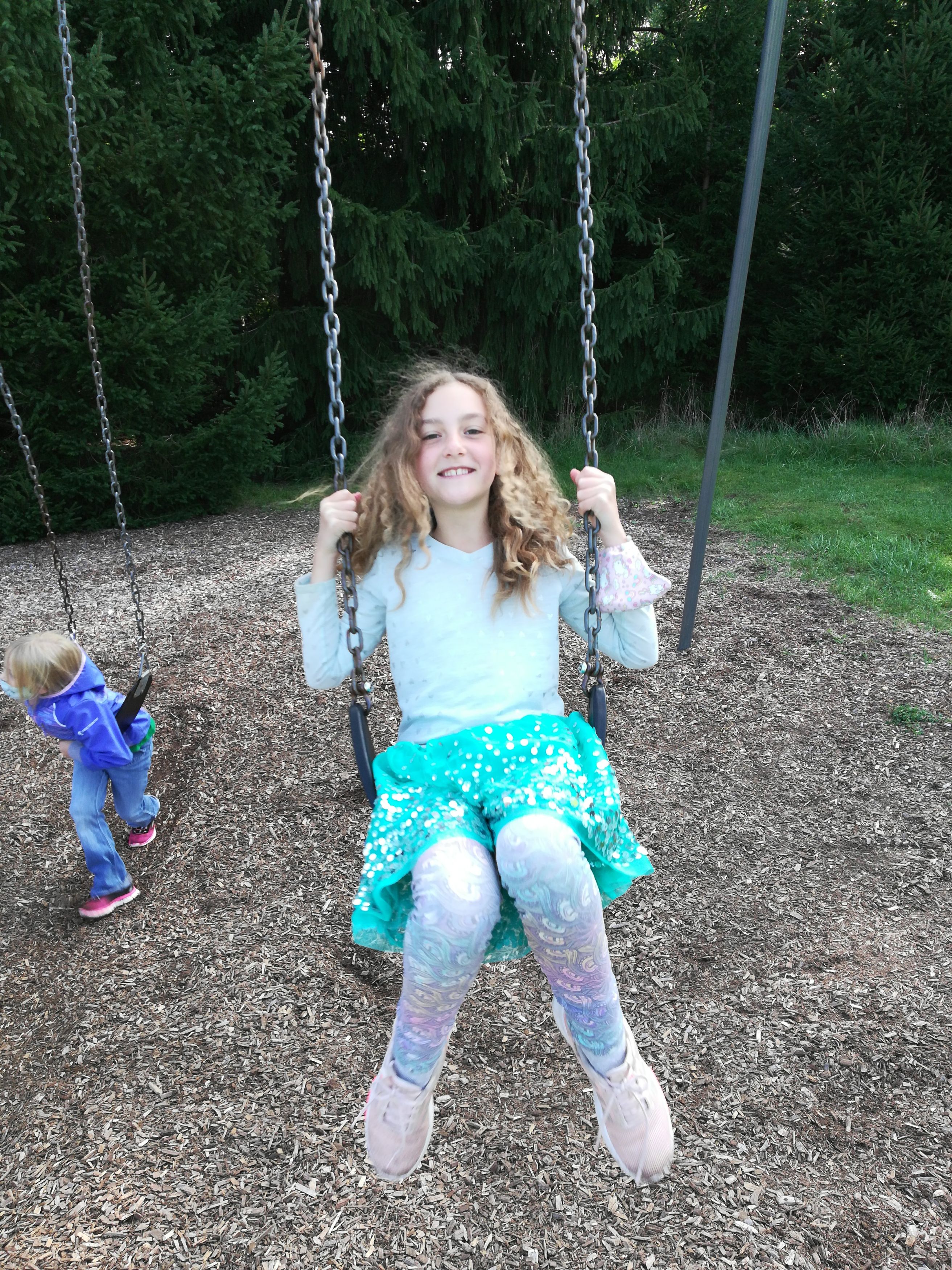 ometimes children can just be in a bad mood and that is okay. We can help their friends find other play options while giving the upset child room to have the quiet space they need to work things through. There are times that children can be purposefully exclusionary and in those situations we can say “We play with everyone”. Sometimes there are children at the stage where they can only play with one or two children at a time, and it's important that we help protect that space for them.
ometimes children can just be in a bad mood and that is okay. We can help their friends find other play options while giving the upset child room to have the quiet space they need to work things through. There are times that children can be purposefully exclusionary and in those situations we can say “We play with everyone”. Sometimes there are children at the stage where they can only play with one or two children at a time, and it's important that we help protect that space for them.
Therapeutic stories work wonders while bringing imagery to situations.
If a problem seems to be reoccurring or to have an underlying impulse, the teacher may decide to bring a therapeutic story to help the child move through the problem in an imaginative way without the child feeling the weight of his/her actions attached. Sometimes a story is told in the moment, where other times it is told to the group many days in a row or sent home with a child to be read before bedtime. This can be easily done at home. They can be stories of animals, little boys and girls or even stories of you as a child. Author Susan Perrow has an amazing collection of already written tales for various behaviors such as: grief, hitting, grumpy moods, or being shy.
An apology should not be forced.
Instead of forcing an apology that is not heartfelt, modeling caring behavior and inviting a child to participate in it can help facilitate healing between children. A child can help fetch a bandage or ice pack, or possibly rub the other child’s back or offer a hug. Depending on the situation, a teacher might give verbal prompts such as “Sometimes if I hurt someone by accident, I say ‘I am sorry, I didn’t mean to do hurt you. It was an accident.’” A child may choose to try a verbal apology or not, but either way the hurt child is helped by this.
Nourishing the physical body.
If a child gets a bump or bruise, a deep breath, a drink of water or bite of food can do wonders. Also, braiding or combing hair, applying lotion or a little massage can bring a child back into their body and help them feel well cared for. Possible tools we can use for comfort are: ice pack, essential oils, rescue remedy, cream, and a bandage.
Adult Reflection
It is important for the adult to later process and reflect on challenging situations in order to get a bigger sense of what happened and what is happening. Tracing the steps backwards to what lead to the issue can help the adult find the catalyst and that can help them avoid the situations in the future.
